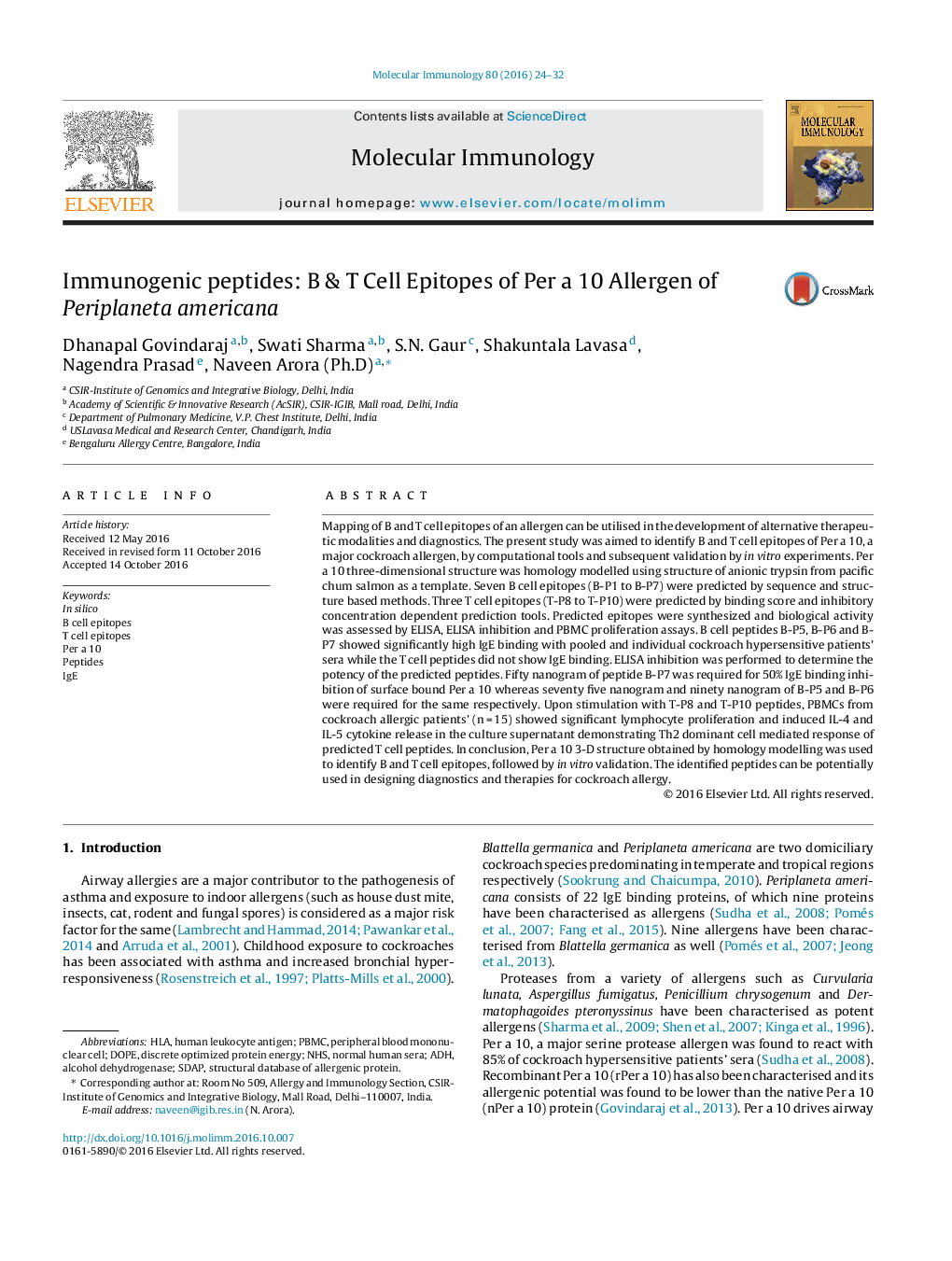| Article ID | Journal | Published Year | Pages | File Type |
|---|---|---|---|---|
| 5592195 | Molecular Immunology | 2016 | 9 Pages |
Abstract
Mapping of B and T cell epitopes of an allergen can be utilised in the development of alternative therapeutic modalities and diagnostics. The present study was aimed to identify B and T cell epitopes of Per a 10, a major cockroach allergen, by computational tools and subsequent validation by in vitro experiments. Per a 10 three-dimensional structure was homology modelled using structure of anionic trypsin from pacific chum salmon as a template. Seven B cell epitopes (B-P1 to B-P7) were predicted by sequence and structure based methods. Three T cell epitopes (T-P8 to T-P10) were predicted by binding score and inhibitory concentration dependent prediction tools. Predicted epitopes were synthesized and biological activity was assessed by ELISA, ELISA inhibition and PBMC proliferation assays. B cell peptides B-P5, B-P6 and B-P7 showed significantly high IgE binding with pooled and individual cockroach hypersensitive patients' sera while the T cell peptides did not show IgE binding. ELISA inhibition was performed to determine the potency of the predicted peptides. Fifty nanogram of peptide B-P7 was required for 50% IgE binding inhibition of surface bound Per a 10 whereas seventy five nanogram and ninety nanogram of B-P5 and B-P6 were required for the same respectively. Upon stimulation with T-P8 and T-P10 peptides, PBMCs from cockroach allergic patients' (nâ=â15) showed significant lymphocyte proliferation and induced IL-4 and IL-5 cytokine release in the culture supernatant demonstrating Th2 dominant cell mediated response of predicted T cell peptides. In conclusion, Per a 10 3-D structure obtained by homology modelling was used to identify B and T cell epitopes, followed by in vitro validation. The identified peptides can be potentially used in designing diagnostics and therapies for cockroach allergy.
Keywords
Related Topics
Life Sciences
Biochemistry, Genetics and Molecular Biology
Molecular Biology
Authors
Dhanapal Govindaraj, Swati Sharma, S.N. Gaur, Shakuntala Lavasa, Nagendra Prasad, Naveen Ph.D,
